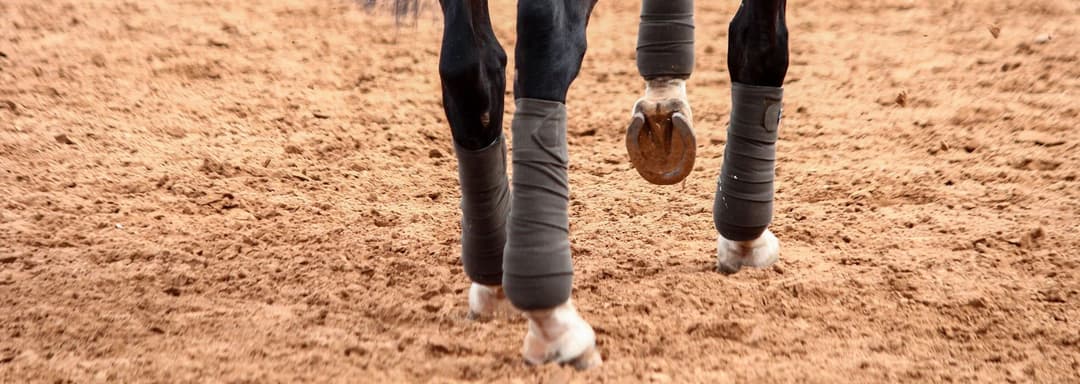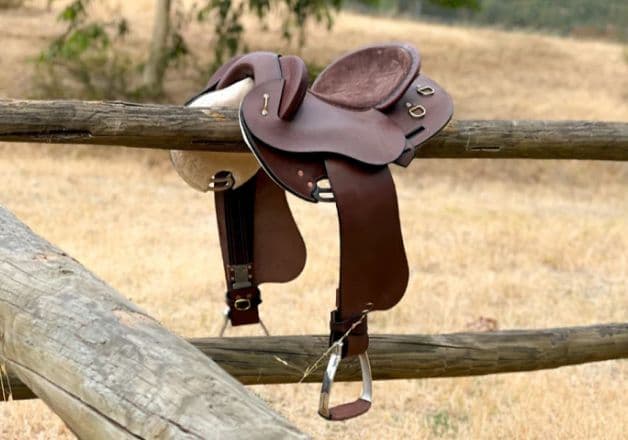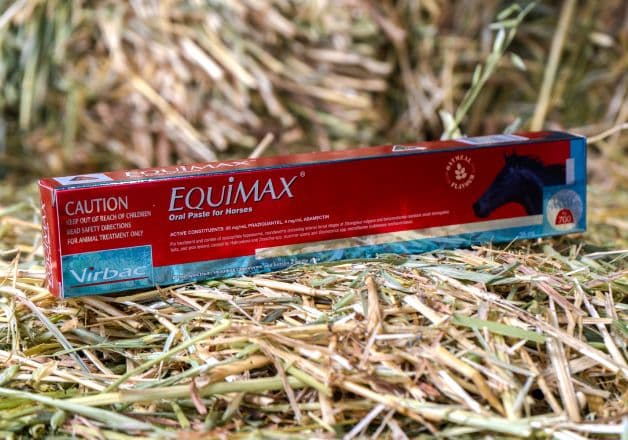
Why Do Horses Need Boots and Bandages and Which is Best?
Why do horses need boots and bandages? Boots and bandages are often used when horses are being transported, exercised, or are out in the paddock.
The lower part of a horse’s front and hind legs lacks protective muscle and can be easily injured. For example, horses can knock their legs against each other or on objects, or suffer swelling if standing still for long periods.
Horse boots and bandages can help protect a horse’s legs from injury, swelling, cold, and other problems. The main difference between them is that boots can be slipped over the legs and fastened, whereas bandages need to be wound around the legs and usually require some padding underneath. Boots can be made from leather, sheepskin, gel, plastic, or neoprene, while bandages are made from soft stretchy fabrics.
But which is best to use? In the equine world, horse lovers do not always agree on whether boots or bandages work best for a given situation. It really depends on preference and other factors.
Here’s an outline of the different types of horse boots and horse bandages, and some of the advantages and disadvantages of each.
Different types of horse boots
There are a number of different types of horse boots available:
- Brushing boots / splint boots – for use during exercise to prevent injuries such as bruises and scrapes from knocks or self-inflicted kicks. They also keep the legs clean.
- Shipping / travel boots – boots with a fleece lining that protect a horse’s legs from injury during transport in a horse float or trailer.
- Stable boots – to prevent against leg swelling or leg injuries while a horse is being stabled. They also help keep the legs warm, dry, and comfortable.
- Bell boots – designed to protect a horse’s coronary band at the top of the hoof from overreach injury, which occurs when a hind foot scrapes or clips a front heel.
- Turnout boots – for protection of a horse’s legs while out in the field. These boots are often used for elderly or injured horses and to protect against mud rash or mud fever.
- Tendon boots – padded boots to protect the tendons and ligaments.
What do boots do for horses?
There are some key advantages:
- Horse boots can protect against a range of horse limb problems.
- They are available in a range of sizes for differently sized horses.
- Boots are easy and quick to put on and take off, especially compared to horse bandaging, which requires some skill to get right.
- They are easier than bandages to keep dry and to clean and reuse.
- They may provide greater protection against external impacts than bandages.
But there are also some key disadvantages:
- While there are a few sizes, it can still be difficult to find a perfect fit, unlike bandages which can be adapted to conform to any horse’s legs.
- They may trap heat, which can lead to thermal injury and cause harm to the tendons.
Fitting horse boots correctly
When used on a horse, boots must fit snugly to be effective. If they flop around when a horse walks in them, they are too loose. However, they should also not be so snug that they’re too tight!
Poorly-fitted boots could cause more problems for the horse than they solve, so getting the right fit is essential.
Types of horse bandages
Horse bandages can be used in a number of ways:
- Exercise and polo bandages – for use during exercise to protect against bruises and cuts.
- Stable bandages – to keep a horse’s legs warm and comfortable in the stable and to prevent against the swelling that can occur from standing still.
- Travel bandages – designed to protect a horse’s legs against bumps and knocks during transport.
- First aid and wound bandages – for binding up leg wounds.
Advantages of horse bandages
- Size is less important than for boots as you can adapt them to the individual horse.
- They can be applied to fit very snugly and may be more comfortable for some horses.
Disadvantages of bandages
- Unlike boots, putting on leg bandages and wraps takes some practice, and may take several attempts to get right.
- There’s a risk of wrapping a horse’s legs too tightly or unevenly, which can lead to pressure points.
- They are more likely to absorb water than horse boots during exercise or turnout.
Fitting horse bandages
It takes some practice to get skilled at putting on horse bandages. They need to be wound around the horse’s legs over padding, be neither too tight nor too loose, and be as smooth as possible. The pressure of bandages must be evenly applied across both sides of the body.
So, which should I use?
It really depends on preference and the particular situation. For example, some horse lovers like to use brushing boots for exercise as they are easier to put on and remove, while preferring bandages for stabling and travel for the warmth and comfort they provide.
There are also other factors to consider – such as the horse’s age, habits, size, and biology, as well as the owner’s bandaging skills.
So to sum it up – there is no simple one-size-fits-all answer for every situation, and it could take some trial and error to work out what works best for the individual horse and their owner! If you're unsure, ask your vet for some assistance.
Check out our range of boots and bandages at Caribu.


